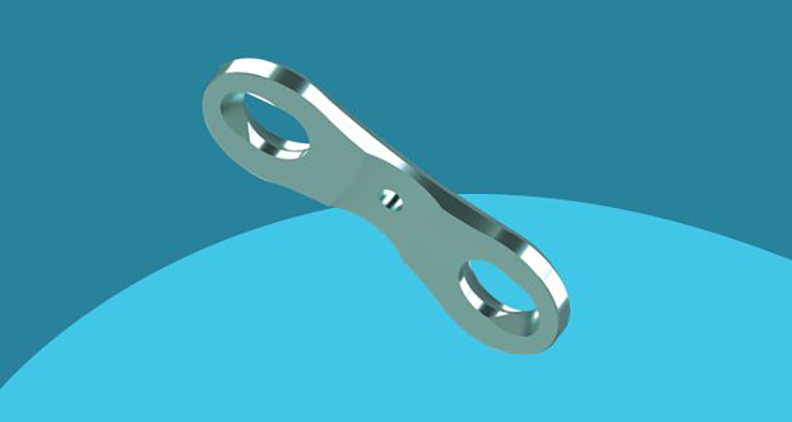
This year at EPOSNA 2017, the combined annual meeting of the European Paediatric Orthopaedic Society and the Pediatric Orthopaedic Society of North America, exhibitors unveiled new products and brands and a number of companies came to share their focus on this niche market. (We originally published a version of this article two weeks after EPOSNA, in May. This version has been updated, and includes pediatric-centric annoucements made through August.)
Two dozen device, bracing and pharmaceutical entities exhibited this year—up from only three at the North American meeting ten years ago (Biomet, OrthoPediatrics and Smith & Nephew). As you consider future product development initiatives, we recap for you only some of what’s happened in the pediatric space since 4Q16.
New and Developing Players:
- AMB Surgical received funding to develop a prototype for the Flyte Automated Growing Rod to treat juvenile scoliosis, traumatic injuries, etc. The technology enables remote, non-surgical electronic control of rod adjustment. The device also collects real-time biomechanical stress/strain data.
- NuVasive announced build-up of a salesforce for exclusive focus on pediatrics to promote its MAGEC rod for early onset scoliosis, PRECICE technology for limb lengthening and RELINE Small Stature pediatric deformity fixation. They have launched a pediatric spinal deformity-centric program that addresses research, education end event support.
- Orthofix launched JuniOrtho as a new brand to house its collection of products and services (apps, games, education tools) that treat pediatric orthopaedic and congenital deformities, including the TL HEX TrueLok Hexapod system and Guided Growth plates.
- WishBone Medical formed and announced planned launch of single use, disposable implants and instruments for foot and ankle, trauma, spine and sports medicine indications. The company launched the Exact Osteotomy System in July, focusing initially on juvenile bunion surgery and first metatarsophalangeal joint deformity correction.
Products Cleared for Market:
- Implanet received global regulatory clearance of frame connectors for use with the JAZZ Band to treat adult and pediatric spinal deformity.
- Materialise gained FDA clearance for Surgicase Orthopaedics to assist in pre-op planning for pediatric patients undergoing radius and ulna osteotomies.
- Medicrea received FDA clearance of specialized posterior fixation and band connector components.
- Mighty Oak Medical obtained FDA clearance for 3D-printed FIREFLY Pedicle Screw Navigation Guides, reported to be the only patient-specific pedicle screw guide indicated for use in pediatric patients.
Products Launched:
- OrthoPediatrics launched a distal femoral osteotomy system and clavicle plates, and announced a partnership to distribute Mighty Oak Medical’s FIREFLY pedicle screw navigation guides in U.S. pediatric hospitals. Also, in August, OrthoPediatrics filed an amendment to its IPO and now seeks to raise $57.5MM.
- SeaSpine launched the Daytona Small Stature Pediatric Deformity System
Pega Medical, OrthoPediatrics and WishBone are the only three companies focused solely on pediatrics, by our account. Other device companies that market products in this space include Arthrex, DePuy Synthes, EOS Imaging, K2M, Merete Medical, Smith & Nephew, Stryker and Zimmer Biomet.
Spine and trauma products make up the majority of the market. The worldwide spine pediatric market is estimated to be between $500 million and $600 million, according to industry observers. Orthofix leadership estimates the pediatric trauma market at about $600 million, split in half between the U.S. and ex-U.S.
Nick Deeter founded OrthoPediatrics in 2006, and more recently established WishBone Medical as a new entrant to the pediatric niche. When we asked him why he launched a second orthopaedic pediatric company, he pointed to several drivers.
Surgeon demand: The orthopaedic pediatric market is underserved, he says, emphasizing the numbers in the U.S. alone. There are nearly 3,700 hospitals in the U.S. that perform orthopaedic surgery on children, 268 of which are standalone children’s hospitals. Surgeons seek anatomically-appropriate implants for children.
Parent demand: Millennials are becoming parents. The generation is educated, Internet- and product-savvy, Deeter says. He predicts that they will research and choose anatomically correct products.
New segment demand: Today, children specialize in sports, Deeter pointed out. More sports repetition injuries are taking place, including ACL tears, but few device companies offer pediatric product lines for sports medicine/soft tissue repair.
The rate of growth for the orthopaedic pediatric market will be contingent on several factors, including the ability of the solely-pediatric-focused companies to keep up with demand and sell surgeons and patients on their products, as well as expansion into underserved market segments and countries. If these companies prove success in this niche, they could become prime acquisition targets for larger companies seeking entry into new markets.




